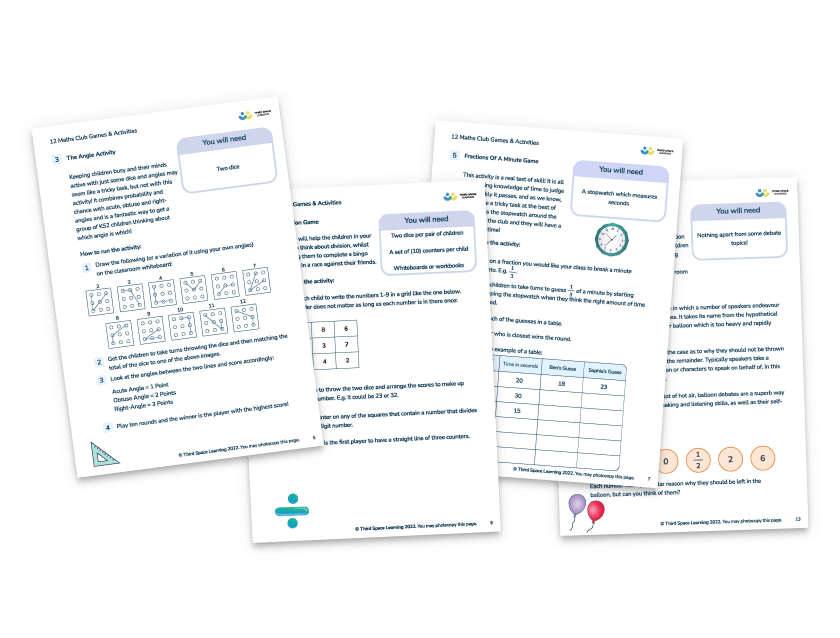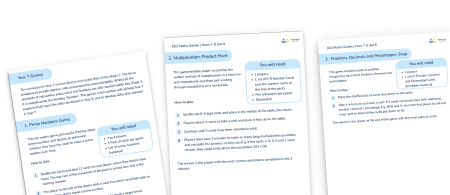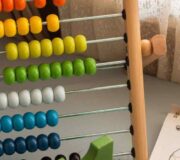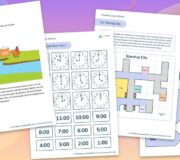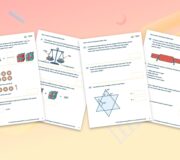The 24 Best Free KS3 Maths Games For Engagement At School and Home
KS3 maths games are still a really good way to engage and motivate pupils in year 7, 8 and 9. Just because they’ve moved on from the more traditionally ‘fun’ stage of their schooling to secondary school, doesn’t mean that KS3 children are any less susceptible to the attractions of fun KS3 maths games.
At KS3, we try to encourage pupils to look for different strategies for solving problems and deepen their understanding of numbers. KS3 maths games are a great way to do this. They provide opportunities for pupils to practise, without the need for any input from the teacher. Teachers are able to watch and observe how pupils approach problems and make assessment judgements. Another great thing about these maths games is they support home-school links which are particularly valuable at a time when parents can start to feel increasingly isolated from what their child is experiencing at school.
Parents are able to learn about their children’s mathematical thinking by playing some of these KS3 maths games with them at home.
When played repeatedly in KS3, maths games are fantastic for supporting a child’s development and understanding of maths.
In this blog, I will be looking at games that can be played in each of the year groups in key stage 3. Many of these games aren’t restricted to the year group they have been allocated and can be suitable for children of different ages, sometimes with small adjustments to the numbers used. In many cases, no adjustments are needed for them to appeal to all ages.
KS3 Maths Games Pack Of Downloadable Resources
Download printouts of all the sheets and resources you'll need to play and manage these KS3 maths games.
Download Free Now!Maths games for year 7
The curriculum in year 7 is more diverse and varied than key stage 2. The focus moves from number and calculation and broadens to include algebra, ratio & proportion and probability. Whilst all the elements of calculation, place value and fractions are still covered within key stage 3, it is instead under the heading ‘number’. The games in this section will all help year 7 children to build upon the skills developed in year 6, and to build upon those covered in year 7.
1. Prime numbers game
This fun maths game gets children thinking about prime numbers and factors, to determine whether they have the cards to make a prime number each time.
What you will need to play:
- 2 or more players
- Pack of cards (Ace = 1, Jack = 11, Queen = 12 and King = 13)
- List of prime numbers (optional): 2, 3, 5, 7, 11, 13, 17, 19, 23, 29, 31, 37, 41, 43, 47, 53, 59, 61, 67, 71, 73, 79, 83, 89, 97, 101, 103, 107, 109, and 113
How to play:
- Shuffle the cards and deal 11 cards to each player, which they hold in their hand. The top card of the remainder of the pack is turned over and is the ‘starting number’.
- The non-dealer (or person to the left of the dealer) adds a card from their hand that adds to the starting card to equal a prime number.
- The next player then tries to add to that total to equal a larger prime.
- When a player can no longer add a card that sums up to a prime the hand is over, and the last person to make a prime gets a point.
The first player to score 5 points is the winner.
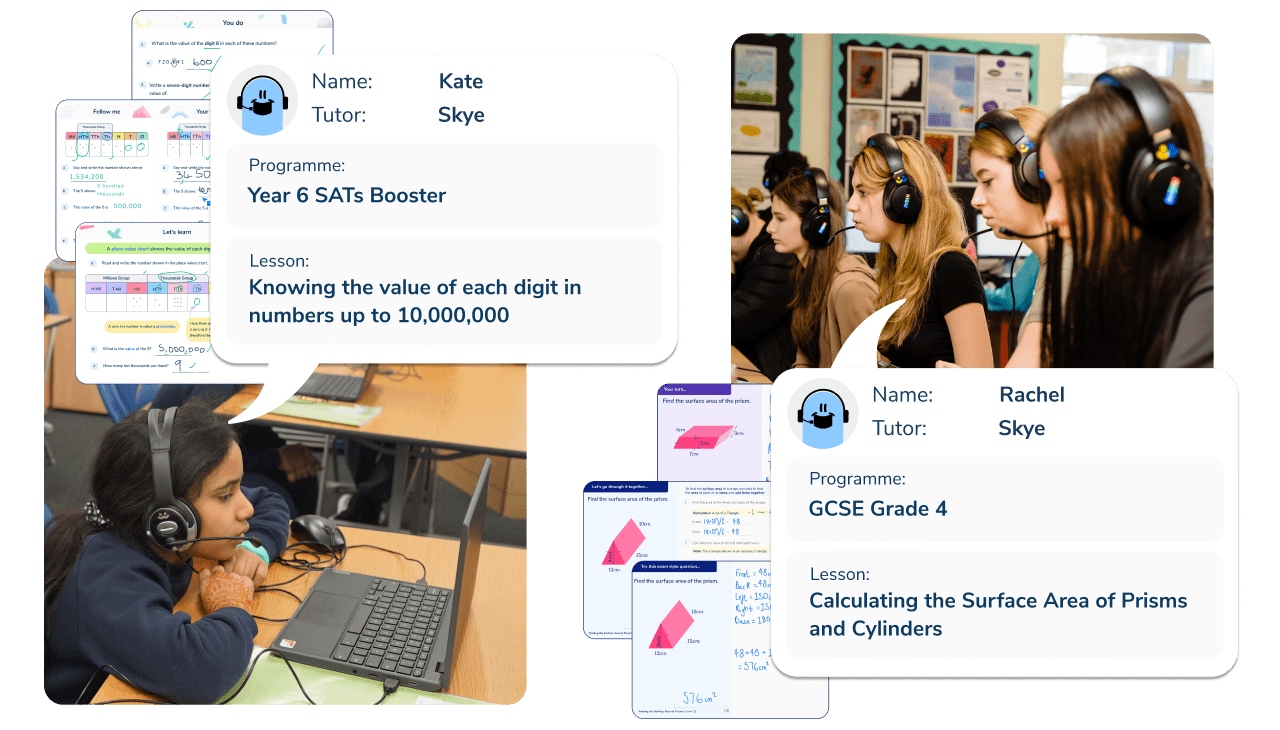
Meet Skye, the voice-based AI tutor making maths success possible for every student.
Built by teachers and maths experts, Skye uses the same pedagogy, curriculum and lesson structure as our traditional tutoring.
But, with more flexibility and a lower cost, schools can scale online maths tutoring to support every student who needs it.
Watch Skye in action2. Multiplication game: product hunt
This game enables children to practise the written method of multiplication in a more fun and motivational way than just working through calculations on a worksheet.
What you will need to play:
- 2 players
- 0-9 digit cards
- Paper and pen
How to play:
- Shuffle the cards and place in the middle of the table, face down.
- Players take it in turns to take a card and place it face up on the table.
- Continue until 5 cards have been selected.
- Once the 5 cards have been chosen, players have 2 minutes to make as many long multiplication questions and calculate the answers as they can (e.g. if the cards 2, 9, 5, 6 and 1 were chosen, they could write down the calculation 291 x 56.
- The winner is the player with the most correct calculations completed in the 2 minutes.
3. Fractions, decimals and percentages game: snap
In year 7, children need to be able to recognise equivalent fractions, decimals and percentages. This game is a simple way of practising this in a more engaging and fun way than working through a worksheet.
What you will need to play:
- 2 players
- A set of shuffled fraction, decimal and percentage cards (see printable resource pack)
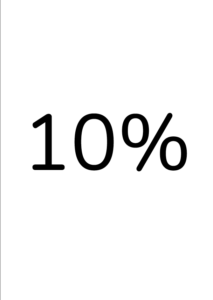
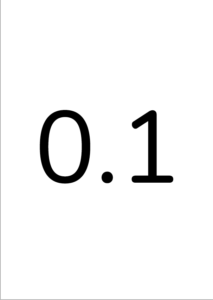
How to play:
- Place the shuffled pile of cards face down on the table.
- Take it in turns to turn over a card. If 2 cards are turned over with matching fractions/decimals/percentages e.g. 50% and ½, then the first player to call out ‘snap’ gets to keep all the cards put down so far.
- The winner is the player at the end of the game with the most pairs of cards.
4. Multiplying / dividing fractions game
This game can be used for both multiplying and dividing fractions, as well as comparing the size of 2 fractions. This game really gets children thinking, as they have to think carefully where to position their digits to make the largest fraction.
What you will need to play:
- 2 players
- A set of 1-9 cards
- Blank fractions sheet with multiplying or dividing questions (see printable resource pack)
- Pen
- Dice
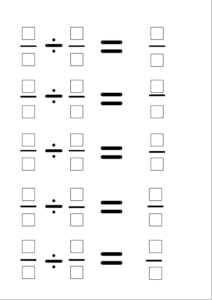
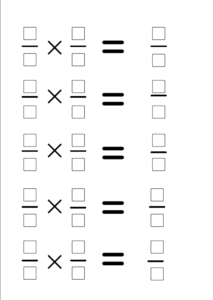
How to play:
- Each player has a blank multiplying or dividing fractions page.
- Take it in turns to throw the dice and each player decides which box on their sheet to put the number in.
- Once the numbers have been generated and all 4 boxes contain a number, each player multiplies their fractions together (or they can divide the fractions if this is the focus).
- The player who has made the greatest fraction, when the 2 are multiplied or divided, scores 2 points.
- If both players make the same sized fraction, each player scores 1 point.
- The winner is the first player to reach 10 points.
5. Algebra game: 3 in a row
In year 7, children build on the algebra skills learnt in year 6 and start applying the skills that will take them through to GCSE. This game is a great way to practise algebraic equations and more fun than simply answering questions from a textbook.
What you will need to play:
- 2 players
- Algebra game board (see printable resource pack)
- 2 dice
- Algebra equations list (see printable resource pack)
- 20 counters (2 colours)
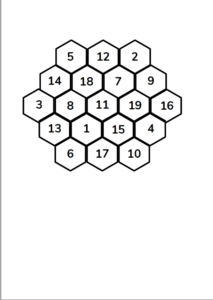
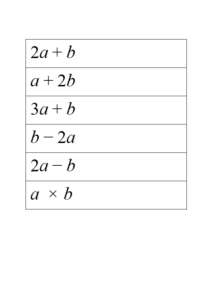
How to play:
- The first player throws both dice.
- With the 2 numbers generated, they decide which number will represent ‘a’ and which number will represent ‘b’.
- They then choose one of the 6 equations, using the 2 numbers generated to represent a and b.
- They work out the answer and cover the number with a counter.
- The next player does the same.
- Players take it in turns until one player has positioned 3 counters in a row. They are the winner.
6. Coordinates game: battleships
In this game, players must identify all the coordinates of their opponent’s battleships. It can be played using a 2 or a 4 quadrant grid and is great for practising the reading and plotting of coordinates.
What you will need to play:
- 2 players
- A blank coordinates grid, A – I on the x-axis and 1 – 9 on the y-axis, for each player (see printable resource pack)
- A pen for each player
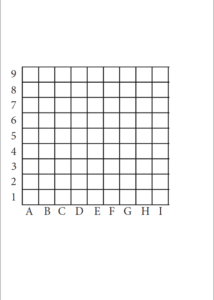
How to play:
- Each player has a blank coordinates grid.
- They plot their ‘battleships’ (make sure the size and number of battleships are agreed in advance) on the grid and make a note of the coordinates.
- Player 1 goes first and calls out their first coordinate. If it hits one of the coordinates on player 2’s grid, player 2 calls out ‘hit’ and player 1 marks it off. If it misses player 2’s battleships, they call out ‘miss’ and player 1 marks it as a miss.
- Players then swap over, so player 2 calls out their first coordinate. As before, player 1 calls out ‘hit’ or ‘miss’
- Once a battleship has had all the coordinates called out, the player who’s battleship it is shouts ‘battleship sunk’. The other player marks this on their grid.
- The winner is the first person to sink all the other player’s battleships.
Read more
Maths games for year 8
By the end of year 8, children should be increasingly fluent in making meaningful connections between different mathematical concepts and be able to apply them readily. Children should understand and solve a variety of algebraic equations, understanding how to manipulate expressions and equations fluently. The games in this section will enable children to practice the skills learnt both in year 8 and in previous years.
7. Algebraic equations game: find the operation
This game is a fun way to get children to practise working with algebraic equations, through both thinking of their own and identifying their partner’s.
What you will need to play:
- 2 players
- 0-5 grids (see printable resource pack)
- Pen
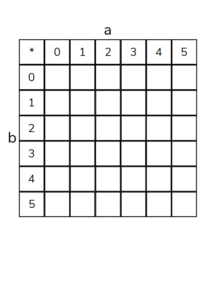
How to play:
- Both players have a 0-5 grid, marked ‘a’ and ‘b’.
- Each player needs to decide on the rule for their grid. For example, a * b means treble a, then add b.
- Once they have decided on a rule for their grid, they complete 7 answers.
- Players then swap grids and attempt to work out the other player’s rule, then complete the grid.
- The winner is the first player to correctly complete the grid.
Thinking ahead? Check out our GCSE Maths page and Algebra lessons!
8. Factors and multiples game
This game encourages children to focus on both factors and multiples, and gives children a valuable chance to practise their times tables.
What you need to play:
- 2 players
- A hundred square (see printable resource pack)
- 2 pens (different colours)
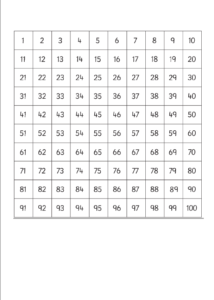
How to play:
- The first player chooses a number on the hundred square and crosses it out.
- The next player chooses a second number to cross out in a different colour. This number must be a factor or multiple of the first number.
- Continue crossing out numbers, ensuring that each number crossed out is a factor or multiple of the previous number that has just been crossed out.
- The first person who is unable to cross out a number loses and the other player earns one point.
- The winner is the first player to use their multiplication tables to get to five points.
If you liked this, then check out our times tables games!
9. Number game: yes / no
A game that can be used to get children to identify the basic properties of individual numbers (e.g. square number, multiple, factor). The child guessing has to prioritise which questions are going to enable them to get closer to the answer.
What you need to play:
- At least two players
- Pen and paper
- Scorecard to keep track of player scores each go
How to play:
- Each player writes down a set of different values (e.g. 5 numbers) for the other player(s) to guess.
- Player 1 asks a question about the other player’s number (e.g. is your number a multiple of 5?).
- If the answer is ‘yes’, player 1 gets to ask another question.
- If the answer is ‘no’, player 2 gets to ask a question.
- The winner is the first player to correctly guess the other player’s number. They score one point.
- The first player to get to five points wins the game.
10. Division and remainders game: mystery number
In this game, children use a range of clues involving division and remainders to work out the mystery number.
What you need to play:
- 2 or more players
- Pen and paper
How to play:
- Both players think of a number between 1 and 100 for the other player to guess.
- Player 1 gives a number between 2 and 10.
- Player 2 works out what the remainder would be if their mystery number was divided by that number.
- For example, player 2 may have chosen 44. If player 1 chose a 3 as their first number, then player 2 tells them what the remainder would be if their number was divided by 3. In this case, it would be a remainder of 2.
- Players jot down this information, to help them work out the number once all the clues have been used.
- Roles then swap and player 2 gives player one a number. Player 1 works out what the remainder would be if their number was divided by the number given by player 2.
- This continues. The winner is the first player to correctly identify the number.
More maths games for primary and secondary schools
- Top 25 maths games
- 24 KS1 maths games
- 26 KS2 maths games
- Place value games
Maths games for year 9
During year 9, pupils continue to build upon the key skills from year 7 and year 8. One of the other key procedures and formulae they investigate is Pythagoras’ theorem. The games in this section will build a pupil’s understanding of Pythagoras’ theorem and enable them to practise other skills learnt during their time in key stage 3.
11. Number game: how many steps?
This game encourages pupils to look at multiple steps they can use to get from one number to another number. It also encourages the use of inverse operations/checking of calculations to check whether answers are correct – one of the most valuable maths skills they’ll learn!
What you need to play:
- One or more players
- Scorecard
- Pen and paper
How to play:
- Each player is given the same starting number and answer to use (e.g. starting number of 6, answer of 17).
- Each player has 1 minute to write down the steps they would take to get from 6 to 17.
- Players can use any numbers they wish.
- Players are allowed to repeat an operation to get to an answer (e.g. for getting from 6 to 17, players can just do 6 +1, +1, +1 etc. until they get to 17), but will only score 1 point for each different operation.
- The number of different steps used is the score (e.g. 5 different steps = 5 points).
- E.g. to get from 6 to 17 in the time given: 6 (x3) = 18 (+9) = 27 (+8) = 35 (/5) = 7 (+10) = 17. This would score 5 points.
- Each player scores their number of different steps taken for each round.
- The player with the most points after the number of rounds played is the winner.
- Players are encouraged to check each other’s answers and the steps taken.
- If any stage is incorrect, the player scores 0 points for that round.
12. Number game: take five
This is a number game to encourage pupils to think carefully about strategies needed to get an answer within a range of totals. The more individual numbers used to get an answer, the more points the player gets. Pupils need to decide whether a strategy of getting maximum points for each answer or using fewer numbers to get each answer is the best method.
What you need to play:
- One or more players
- Pen and paper
- Playing cards can be used to generate numbers to be used by player(s) in the game
How to play:
- 5 numbers are selected at random.
- A consecutive set of 10 answers is agreed to work towards (e.g. 21-30, 41-50).
- Players are given a 5-minute time limit to get the answers to as many of the totals as possible.
- Players cannot repeat the use of a number for a single answer (unless it is part of the ones they have).
- The more individual numbers used for an answer, the more points can be awarded.
- E.g. the selected numbers are 9 5 2 7 1 and consecutive totals are from 21-30.
- For 23, the player could get to it using the following calculations: (7 x 5) = 35, (9 + 2 + 1) = 12, 35 – 12 = 23. Because 5 different numbers were used, the score is 5 points.
- For 28, the player could get to it using the following calculations: (5 – 1) = 4, 4 x 7 = 28. Because 3 different numbers have been used, the score is 3 points.
- If a player has two of the same answer (eg: two methods for getting 23), whichever one used more of their numbers is the points they score.
13. Fractions game: countdown
This is a more challenging version of the standard, whole number game of countdown and requires players to carry out the 4 operations using fractions and whole numbers.
What you will need to play:
- 2 or more players
- Whole number cards (see printable resource pack)
- Fraction cards (see printable resource pack)
- 10-sided dice or 1-10 digit cards
- Paper and pen
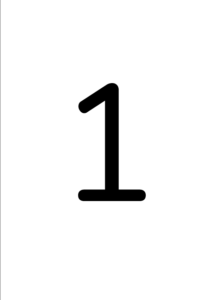
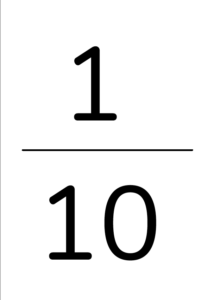
How to play:
- Place the whole number and fraction cards into 2 piles.
- Players take it in turns to select a card from the whole number or the fraction card pile.
- Once 6 cards have been selected, place them face-up on the table.
- A target number then needs to be generated (either using a 10-sided dice or 1-10 digit cards to generate the numerator and denominator).
- Players have 2 minutes to try and reach the target number using any of the 6 fraction/whole number cards and any of the 4 operations.
- The winner is the first to reach the target number or the player who is closest after 2 minutes.
14. BIDMAS game: 4 in a row
This is a great game for practising the rules of BIDMAS alongside strategy skills. It can be played individually or against other players.
What you will need to play:
- 1 or more players
- 4 dice
- Number grid 1-50
- 2 coloured pens
How to play:
- The first player throws the 4 dice to generate 4 numbers.
- Using BIDMAS, they write a number sentence and colour in the square on the 1-50 grid, which contains the answer.
- The next player does the same.
- The aim of the game is to be the first player to colour in 4 squares in a row.
Prepare for year 10 and year 11 with our GCSE Maths pages!
KS3 mental maths games
Mental maths games are great for practising a range of mental maths concepts, whilst not requiring resources or time to set up. They can be used as a quick warm up at the start of a lesson, a fun way to consolidate learning at the end of a lesson, or as a time filler at any point in the day.
15. Number game: nifty fifty
This game is good for developing logical thinking and problem solving.
What you need to play:
- 2 players
- Set of playing cards – Ace to 10 (Ace is worth 1)
How to play:
- Both players select 4 playing cards.
- With the 4 cards, they have 2 minutes to make a 2-digit + 2-digit number sentence which is closest to 50.
- The number sentence closest to 50 scores 1 point. If the player creates a calculation with exactly 50 as the answer, they earn 2 points.
- The winner is the player with the most points after 5 rounds.
- To add further complexity to this game, you could give each player 6 cards and then add a ‘wild’ negative number card into the game which both players have to use in their round.
16. Subtraction game: sub-zero
This is a simple mental subtraction game, which doesn’t require any resources. An easy interactive game to play when there are a spare few minutes.
What you will need to play:
- 2 players
How to play:
- Starting with the number 123, the first player chooses an amount to subtract.
- The number subtracted must contain one digit from the previous answer.
- The player could choose to subtract 22, so the new number would be 101.
- A zero cannot be subtracted, so the next number has to contain a 1.
- The next player could subtract 11, so the new number is 90.
- The only number that can be subtracted now is 9.
- The game continues. The first player to get to zero is the winner.
- The game can be played with a different starting number each time.
17. Number game: countdown
This mental maths game is popular for any age. Younger children can access it on a more basic level, whereas older children can use more complex calculations. It works well in small groups, or as a whole class activity, and encourages players to think deeply to identify calculations that will get them to the target number.
What you will need to play:
- 2 or more players
- 4 ‘large number’ cards – 25, 50, 75, 100
- 2 sets of 1-10 cards
How to play:
- Set out the large number cards face down in one pile and the small number cards face down in another pile.
- Players take it in turns to choose a card from either the small or the large number piles and place it face down on the table.
- Once there are 6 cards face-up on the table, the target number needs to be generated.
- The target number can be generated by picking 3 number cards from a pile of 0-9 cards.
- Once the number has been generated, children have 2 minutes to try and reach that total using the 6 cards selected.
- Children can use any calculation using the 6 numbers, but each number can only be used once.
- The winner is the first person to reach the target number or the person to have the closest answer after 2 minutes.
18. Number game: target 24
This game is a great problem solving and ‘low floor, high ceiling game’, as players search for a solution. They can use only the basic calculations to reach the target number, or they can utilise much more complex mathematical calculations.
What you will need to play:
- A pack of cards (number cards only)
- 2 or more players
How to play:
- Shuffle the pack of cards and lay face down on the table.
- Each player picks a card and turns it face-up on the table until there are 4 cards displayed.
- The aim of the game is to make ‘24’ using only the cards on the table and any of the 4 operations.
- For example, if they have a 6, 10, 2 and 6, the solution could be very simple, such as basic addition i.e. 6 + 10 + 2 + 6 = 24.
- Older children may include more complex operations involving brackets, for example, they may have 9, 5, 6 and 9 and solve it by 5 – (9 ÷ 9) x 6 = 24.
- If nobody is able to reach 24, the player who is the closest wins.
19. Number game: wild jack
This is another great game for practising mental maths and numeracy skills using all four operations.
What you need to play:
- 2 or more players
- Playing cards with all picture cards (other than the Jacks removed)
How to play:
- In this game, the 1-10 cards represent their numbers, and the Jacks can represent any number from 1-10.
- The aim of the game is to reach the target number. To make the target number, shuffle the pack and turn over the top 2 cards. If either is a 10 or Jack, put them to the bottom.
- The 2 cards turned over make the target number. For example, if you turn over a 6 of spades and a 4 of hearts, your target number will be 64.
- Each player is dealt 5 cards, which are set out face up. Players can then add, subtract, multiply and divide to try to reach the target number.
- If a target number is reached using all 5 cards, 10 points are scored. If 4 cards are used, 8 points are scored. If 3 cards are used, 6 points are scored, and so on.
- The winner is the player with the most points at the end of the game.
KS3 problem solving games
Problem-solving games are a great way for pupils to deepen their mathematical understanding. These games require children to think strategically and to approach problems in different ways.
20. Number game: game of six
This is a number game to encourage children to think carefully about strategies needed to get an answer within a range of totals. The more individual numbers used to get an answer, the more points the player gets. Children need to decide whether a strategy of getting maximum points for each answer or using fewer numbers to get each answer is the best method.
What you need to play:
- One or more players
- Pen and paper
- Playing cards can be used to generate numbers to be used by player(s) in the game
How to play:
- 6 numbers are selected at random.
- A consecutive set of 10 answers is agreed to work towards (e.g. 21-30, 41-50).
- Players are given a 5-minute time limit to get the answers to as many of the totals as possible.
- Players cannot repeat the use of a number for a single answer (unless it is part of the ones they have).
- The more individual numbers used for an answer, the more points can be awarded.
- E.g. the example numbers given are: 4 8 6 3 5 9 and consecutive totals are from 31-40.
- For 31, the player could carry out the following calculations: (4 x 8) = 32, (6 – 5) = 1, 32 – 1 = 31. Because 4 different numbers were used, the score is 4 points.
- For 37, the player could carry out the following calculations: (4 x 9) = 36, (8 + 3) = 11, (6 + 5) = 11, 36 + (11 / 11) = 37. Because 6 different numbers were used, the score is 6 points.
- If a player has two of the same answer (e.g. two methods for getting 31), whichever one used more of their numbers is the points they score.
21. Number game: 5 of a kind
This problem-solving game is quite a challenging maths activity. It requires players to think deeply about the calculations they use and how they can use quite complex calculations to achieve solutions.
What you will need to play:
- 2 or more players
- A set of cards numbered 2-9
How to play:
- Shuffle the number cards and place them face down on the table.
- The first player picks one of the cards.
- This is their ‘5 of a kind’ number. For example, if they selected a 6, they would have 6, 6, 6, 6 and 6 to use.
- The aim of the game is to use one or more of the 5 digits to get an answer between one and ten.
- If for example, the player chose a 7, they would then need to use one or more of the digits to make the answer 1, 2, 3 up to 10. To make 1, they could do 7 ÷ 7. To make 2 they could do (7 ÷ 7) + (7 ÷ 7) etc.
- This is a challenging game, but the winner is the player to achieve the most answers between 1 and 10.
22. Addition game: got it
This is a great strategy game and with no set up required, it’s easy to play at any time. It involves adding, but players need to think carefully about the strategy they use and whether they are able to find a winning strategy.
What you need to play:
- 2 players
How to play:
- The target number for the game is 23.
- The first player chooses a number from 1 to 4.
- Players take turns to add a whole number from 1 to 4 to the running total.
- The player who lands on 23 wins the game.
- Players need to think about their strategy and plan ahead.
23. 2D shapes game: square it
This is another good strategy game, not only requiring players to think about their own game but also that of the other player’s.
What you need to play:
- 2 players
- Square dot paper
- 2 coloured pens
How to play:
- The first player places a coloured dot on one of the dots on the squared paper.
- The second player does the same, using a different colour pen.
- This continues until one of the players has placed 4 dots which can be joined together to form a square.
- The square can be any size on the grid and can also be tilted.
- The game requires both players to be working out their own strategy, whilst also keeping a close eye on the other player’s game, to ensure any potential squares are blocked.
24. 3D shapes game: nine colours
This is a fun game and challenging activity, similar to playing with a Rubik’s cube.
What you need to play:
- One or more players
- 27 cubes (3 each of 9 colours) per person
How to play:
- This game can be played individually, or as a speed challenge against other players.
- Each player needs to make a large cube using the 27 small cubes.
- The aim of the game is to be the quickest player to make a large cube with all 9 cubes on each face containing only 1 of each cube colour.
- If any face contains more than one of the same colour cube, the player hasn’t successfully completed the challenge.
Hopefully, this blog has given you some ideas for games you could play in your classroom. Most are easy to adapt, to suit any age or the topic you are covering. Don’t just adapt the games yourself; give children the opportunity to adapt and think up their own rules too.
Download the free KS3 Maths Games Printable Resource Pack
READ MORE: KS3 Maths Worksheets For Effective Learning
Looking for additional support and resources at KS3?
You are welcome to download any of the secondary maths resources from Third Space Learning’s resource library for free. There is a section devoted to GCSE maths revision with plenty of maths worksheets and GCSE maths questions. There are also maths tests for KS3, including a Year 7 maths test, a Year 8 maths test and a Year 9 maths test.
DO YOU HAVE STUDENTS WHO NEED MORE SUPPORT IN MATHS?
Skye – our AI maths tutor built by teachers – gives students personalised one-to-one lessons that address learning gaps and build confidence.
Since 2013 we’ve taught over 2 million hours of maths lessons to more than 170,000 students to help them become fluent, able mathematicians.
Explore our AI maths tutoring or find out about school tutors for your school.
